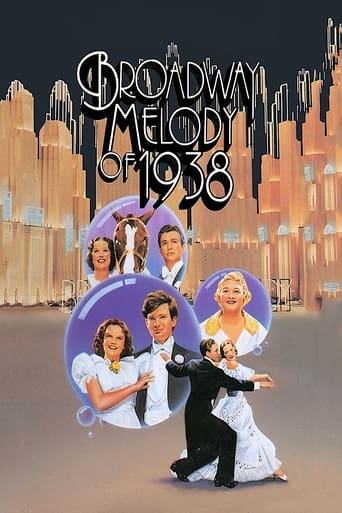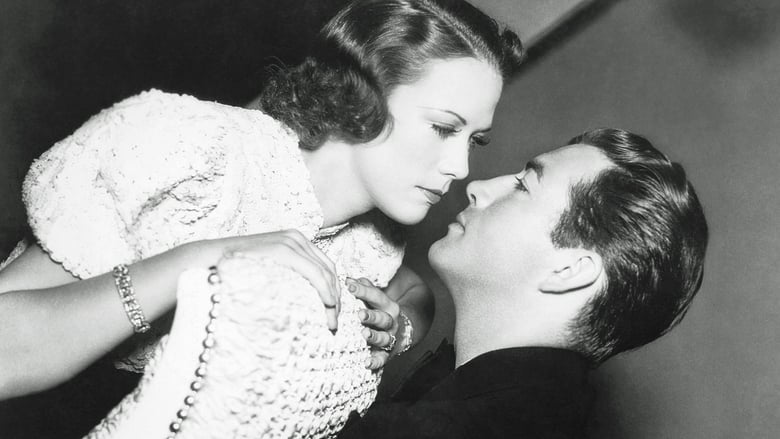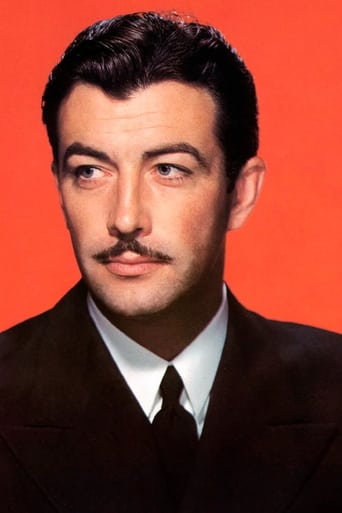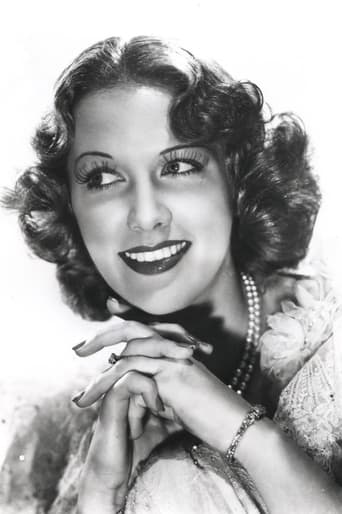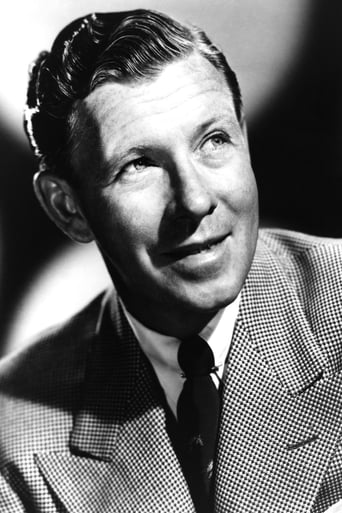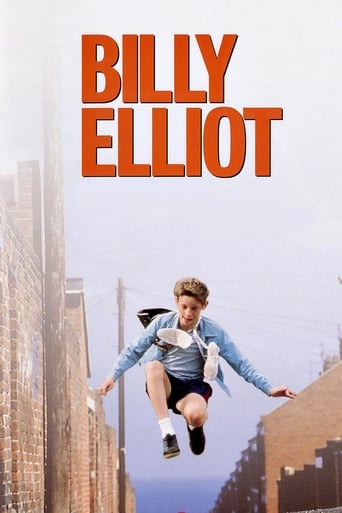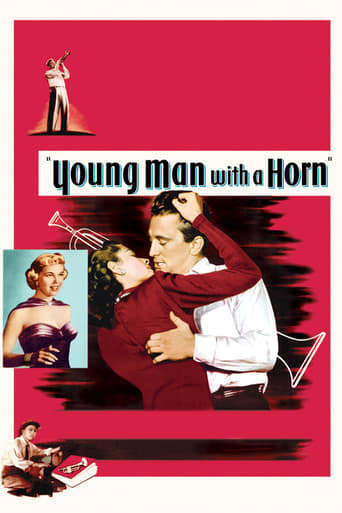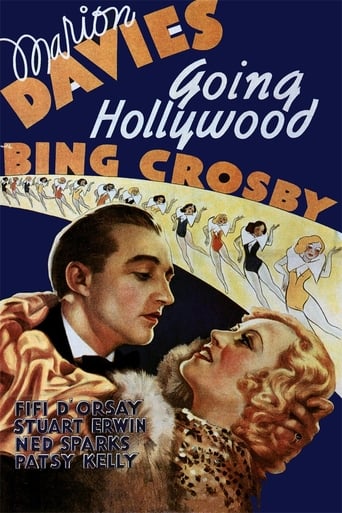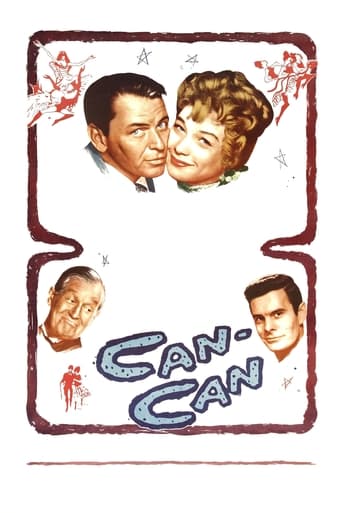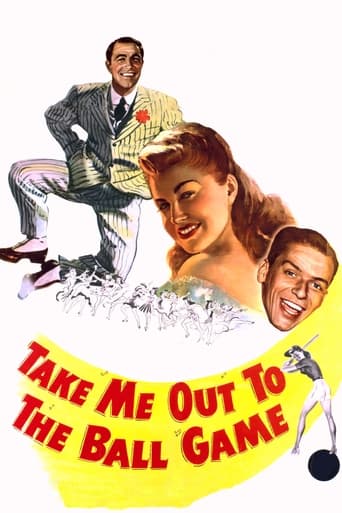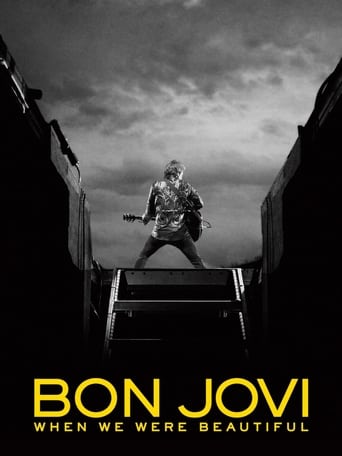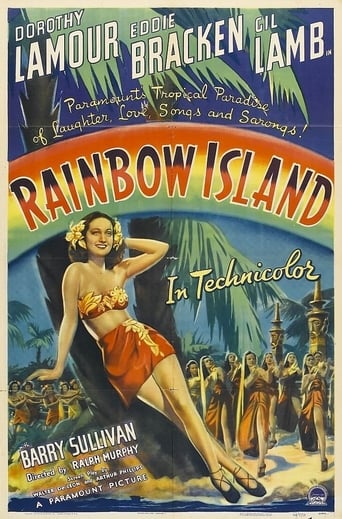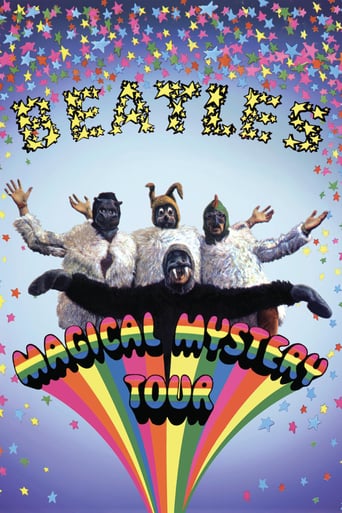Broadway Melody of 1938 (1937)
Steve Raleight wants to produce a show on Broadway. He finds a backer, Herman Whipple and a leading lady, Sally Lee. But Caroline Whipple forces Steve to use a known star, not a newcomer. Sally purchases a horse, she used to train when her parents had a farm before the depression and with to ex-vaudevillians, Sonny Ledford and Peter Trott she trains it to win a race, providing the money Steve needs for his show.
Watch Trailer
Cast


Similar titles
Reviews
Pretty good movie overall. First half was nothing special but it got better as it went along.
I cannot think of one single thing that I would change about this film. The acting is incomparable, the directing deft, and the writing poignantly brilliant.
The movie's neither hopeful in contrived ways, nor hopeless in different contrived ways. Somehow it manages to be wonderful
All of these films share one commonality, that being a kind of emotional center that humanizes a cast of monsters.
The second of a series of films made in the '35-40 period entitled Broadway Melody, that featured the dancing of Eleanor Powell, among other musical and comedic talents. Sturcturally and personnel-wise, this film more resembles the '36 film than the '40 film. Like the '36 film, Eleanor and Robert Taylor are the romantic leads, and Buddy Ebsen serves as one of the lead dancers as well as for a bit of humor with his gangly backwoods screen persona. Taylor and Ebsen would not return for the '40 film. Robert Wildhack also returned for his inane scientific analysis of sneezes, this time, instead of snores, as in the '36 film. Again, most of the musical numbers were composed by the team of Nacio Herb Brown and Arthur Freed. In contrast, most of the (less memorable) songs for the '40 film were composed by Cole Porter. Like the '36 film and unlike the '40 film, several songs without dancing are performed by several vocalists:very young Judy Garland(primarily), an aging Sophie Tucker, Charles Igor Gorin, George Murphy, and Eleanor replace Frances Langford and several others in the '36 film. Unlike the '40 film, where Eleanor is the only lead female dancer,this film and the '36 film feature a secondary female dancer(Judy Garland in this case). Unlike Eleanor, they always were accompanied by a male dancer(Ebsen in Judy's case). Thus, Eleanor has fewer dance numbers in the first 2 films than in the '40 film.This film does have a few things in common with the '40 film, lacking in the '36 film. Eleanor takes part in several duo romantic dances, whereas June Knight did all the romantic dances in the '36 film. Secondly, the prominent role of George Murphy as a singing-dancing partner for Eleanor and in the screen play. However, in the "40 film , he is soon supplanted by Astaire as Eleanor's dancing partner. In this film, he gets two romantic dances with Eleanor alone, plus a dance or two that includes Ebsen.You will notice that in these dances and the one in the '40 film, unlike Astaire, he occasionally fully lifts or carries Eleanor.This is especially prominent in their beautiful dance to "Your Broadway, My Broadway". In fact, I don't recall Astaire ever doing a full lift or carrying a dance partner(despite the fanciful painting on my '40 DVD jacket!. Correct me if I'm wrong. He sometimes did partial lifts and supports(frequent in "Silk Stockings", for example). Occasional lifting and carrying of the female partner enhances the romantic atmosphere of the dance. This is why I find Murphy as a dance partner for Eleanor generally more pleasing than Astaire. He was also a tolerable singer, charismatic and better looking. I rate their long dance to "I'm Feeling Like a Million" as the most spontaneously fun dance in the 3 films, if not the most elegant nor technically challenging. It will remind you of Kelly's "Singing in the Rain" dance, except that it's a duo dance instead of a solo.In addition to Ebsen's sporadic humor, veteran comedian Billy Gilbert shows up several times to display his trademark brand of humor to good effect. Thankfully, Robert Wildhack's scientific classification of sneezes is a less prominent part of the show than in the '36 film! Presumably, audiences of the time were more amused by these acts than most present day viewers.It gave them a chance to laugh at the commonly perceived tendency of scientists to over intellectualize everything.Judy Garland had 2 songs: a special version of "You Made Me Love You", which she sang at Clark Gable's birthday party and which is here repeated, and a rousing version of "Everybody Sing". In retrospect, these were warm ups for her central role the following year in "The Wizard of Oz". Veteran stage actress Sophie Tucker, as Judy's stage mother, also sang and talked a bit about the days of yore on Broadway. Charles Igor Gorin began the film with "The Toreador song", from "Carmen", and later played an important role in inspiring Eleanor's horse Stargazer to jump over hurdles and thus win the Saratoga race, by his rendition of a familiar song from "The Barber of Seville".On the whole, I enjoyed this edition of Broadway Melody a bit more than the others. I think it had the best screen play, the best mix of comedy, and a good mix of pure singing numbers and dancing that the '40 film lacked. However, I won't be terribly upset if you prefer one of the other two.Both the major Fox and MGM musicals of the late '30s tended to have a formula where the lead romantic man usually was an essentially non-musical pretty boy(usually Robert Taylor, Jimmy Stewart, Robert Young, or Clark Gable for MGM, or Tyrone Power, for Fox). This changed around 1940, when Astaire and Mickey Rooney began starring in MGM musicals, and Don Ameche or John Payne usually replaced Power at Fox. Poor George Murphy still usually ended up without the girl in either case!
The third installment of the Broadway Melody series has a great advantage in the performance of 15 year old Judy Garland,here making her first mark in the movies.My wife commented she had never seen a 15 year old act so full of confidence. The movie is mediocre,but very enjoyable light fluff.Robert Taylor and Eleanor Powell have a nice chemistry as the young lovers.Great support from hoofers George Murphy and Buddy Ebsen.Especially Ebsen is a joy to watch. There's also an early appearance of Robert Benchley,and his wit is as dry as ever.It's fun to watch the MGM style musical at an early stage.The next two decades no other studio could touch MGM's musicals for sheer brilliance.
The story of Broadway MELODY OF 1938 is not so much zany as just simply bizarre. Raised on a horse farm where she also somehow learned to sing and dance, Eleanor Powell goes to New York in search of fame and fortune on the Great White Way, where she meets (a) George Murphy and Buddy Ebsen, two horse trainers who are also dancers; (b) Robert Taylor, a producer determined to star her in his new show; and (c) one of the horses from her farm. When the horse comes up lame, Eleanor rescues him--and before too long it becomes necessary for the horse to win the big race in order to finance the show!Eleanor Powell was MGM's great dancing star of the era, George Murphy was one of the screen's most reliable hoofers, and Buddy Ebsen was renowned as a character actor with an eccentric dance style--all three have tremendous star quality and they generate several charming moments. But today the film is chiefly recalled for two supporting players: Sophie Tucker and Judy Garland.Sophie Tucker had been a great stage star for more than 20 years when this film was made, and MELODY offers one of her rare screen appearances: with her no-nonsense, no-holds-barred style, she leaves little doubt about why she was so celebrated--especially when she launches into her signature song "Some of These Days." Garland, on the other hand, was just really beginning her film career, a slightly chunky teenager with a great big voice--and after putting it through the bullseye with a knockout performance of "Everybody Sing" she nailed the audiences of the day with her famous version of "You Made Me Love You," sung to a photograph of Clark Gable. It was the stuff dreams are made of, and from that moment on her film career was straight up all the way.The stars knock themselves out to make it fun, and very often it is. But as a whole, it never really seems work in a consistent sort of way. When all is said and done, Broadway MELODY OF 1938 is the sort of show that you watch for certain scenes rather than for the show itself, which is considerably less than the sum of its parts. Recommended for 1930s musical fans, but even they will likely find very thin stuff indeed.Gary F. Taylor, aka GFT, Amazon Reviewer
"Broadway Melody of 1938" (MGM, 1937), directed by Roy Del Ruth, the third installment to MGM's "Broadway Melody" yearly titled series, following 1929 and 1936, is an ultra lavish edition (minus Technicolor) with a galaxy of stars, and being most noted today mainly for young Judy Garland, in her MGM feature debut, singing to the portrait of movie actor, Clark Gable, than anything else in the entire production. It would had been more interesting in making Garland the central focus to the story as a teen-aged daughter of a legendary Broadway star (Sophie Tucker) of long ago wanting to keep the family tradition going after her mother retires, and the struggles and hardships that come with it. Instead, this edition of "Broadway Melody" includes enough subplots to make this a two hour plus special, and possibly was, but due to some noticeable sudden cuts and abridged scenes with quick blackouts, it finally made it to a 112 minute cut. Even Judy Garland's singing voice to the song, "Yours and Mine" is heard during the last half of the opening credits, and not seen as part of an audition as such, in the plot.For the storyline, Caroline Whipple (Binnie Barnes), a former chorus girl now married to a middle-aged millionaire, Herman (Raymond Walburn), is fond of Steve Reilly (Robert Taylor), and she agrees to back a show for which he has written the score. Caroline maintains a large racing stable. Among her horses is Star Gazer, favored to win a big race at Baltimore. Sally Lee (Eleanor Powell), an ambitious dancer, loves Star Gazer because her father raised him. Hearing that Caroline intends to auction off the horse in New York, Sally stows away in a box car and hopes to go along with him. On the train she meets Steve Raleigh (Robert Taylor), who's traveling with the Whipples in their private car. After Sally helps him complete a score he is writing, he becomes impressed with her singing and dancing, and decides to star her in his upcoming show. While in New York, Steve arranges Sally to live in a boarding house for out-of-work actors run by Alice Clayton (Sophie Tucker), a former Broadway headliner hoping to get her daughter, Betty (Judy Garland) into show business. But before the grand finale featuring Star Gazer in a horse race, and then, the Broadway show, the subplot takes center stage on partners Sonny Ledford (George Murphy) and Peter Polt (Buddy Ebsen) who become trainer and jockey to Sally's horse, both dodging an Italian barber (Billy Gilbert) and his opera singing nephew (Charles Igor Gorin), because they owe him money they played on the horses, which won; plus character actor performers adding some comedy, including Robert Wildhack, who previously demonstrated the art of snoring in "Broadway Melody of 1936," now demonstrating his art of sneezing, which predates the comedy acts of future MGM comic, Red Skelton; Helen Troy as Emma Snipe, the "answer to everything" secretary, and a lot funnier than the sneezer; plus the legendary Robert Benchley in a supporting role as a critic.The musical program includes: "The Toreador Song" from Bizet's CARMEN (sung by Charles Igor Gorin); "Follow in My Footsteps" (sung by George Murphy, Buddy Ebsen and Eleanor Powell); "Yours and Mine" (sung by Eleanor Powell); "Everybody Sing!" (sung by Judy Garland, with Sophie Tucker who sings a portion of "Happy Days Are Here Again", Barnett Parker, and others); "Some of These Days" (sung by Sophie Tucker); "I'm Feeling Like a Million" (sung and danced by George Murphy and Eleanor Powell); "Dear Mr. Gable (You Made Me Love You)" (sung by Judy Garland); "Your Broadway and My Broadway" (sung by Sophie Tucker/danced by Eleanor Powell), and "Broadway Melody" (closing with cast). A cut song, "Got a Pair of New Shoes," which Garland would sing in her latter film, "Thoroughbreds Don't Cry" (MGM, 1937), can be heard briefly sung by chorus during the finale."Broadway Melody of 1938" is pure New Yorkish, with the opening and closing credits focusing on the legendary Broadway theaters, Radio City Music Hall, the Metropolitan Opera House and the streets of Broadway in the after sundown hours. The talented dancing by Eleanor Powell highlight the story, although having her tap-dancing in a box-car and later along with George Murphy on the New York streets in front of the Plaza Hotel around the water pond where they are the only one's around, with the orchestral score playing on cue, may seem foolish by today's standards. These "fantasy" numbers set against realism, along with Garland's memorable "Dear Mr. Gable" number, which takes place in her bedroom after everyone is asleep, all might have worked better as production numbers within the Broadway show, but this has become the normal style of film entertainment, especially by MGM standards, looking more like a dance musical from the 1940s and '50s. Remember Gene Kelly on the streets dancing and singing in the rain in 1952? And speaking of dancers, Buddy Ebsen should not go unnoticed, especially during his brief dancing segment opposite pert Judy Garland in the Broadway finale.In spite of some of its shortcomings, "Broadway Melody of 1938" will not disappoint any avid lover of movie musicals from the golden age of Hollywood, especially seeing some future film stars on the rise, particularly the young Judy Garland, one year before success found her with "The Wizard of Oz" (1939).Aside from "Broadway Melody of 1938" being readily available for viewing on both video cassette and cable's Turner Classic Movies, there was also a motion picture soundtrack on record released in 1983, compliments of Motion Picture Tracks International, which not only includes the entire score in stereo, but an outtake song of "I'm Feeling Like a Million," sung by Judy Garland on piano. One can only hope that someday, musical and/or storyline outtakes from the film will resurface in parts on video or DVD. Next and final installment, "Broadway Melody of 1940" (1940). (***)

